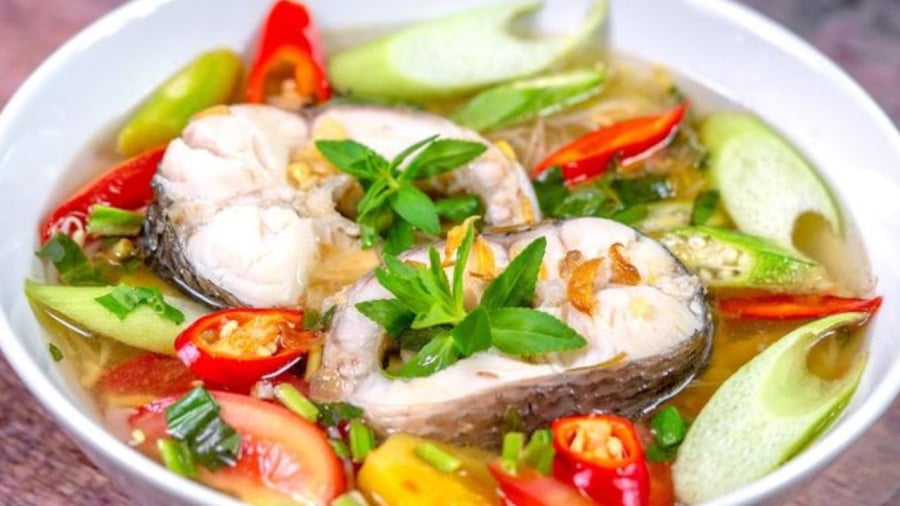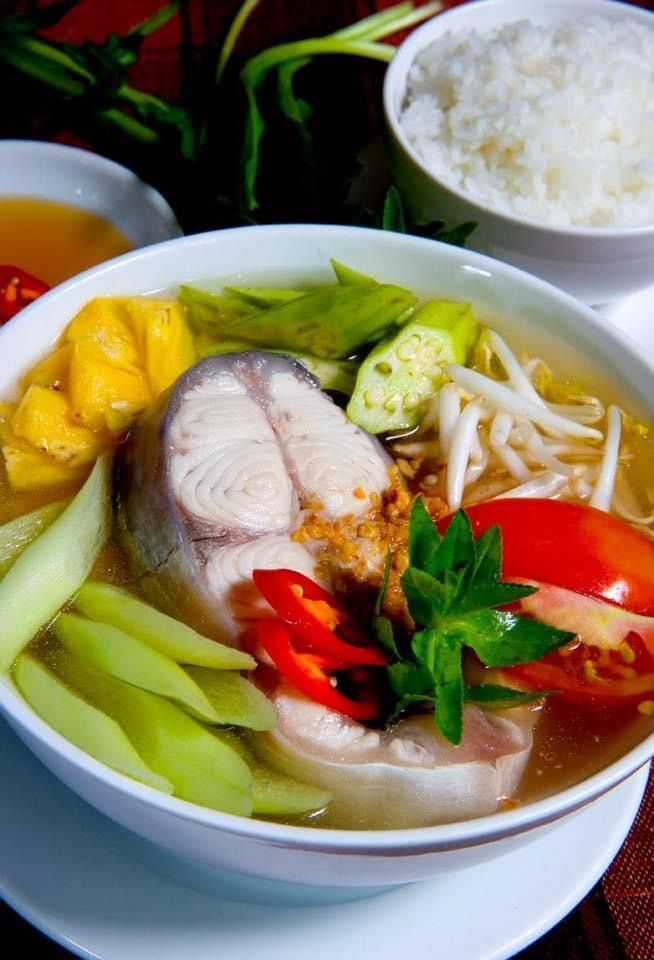Canh cá is a traditional dish in Vietnamese family meals. With its sweet and savory broth, packed with the goodness of fish and vegetables, this soup is both nutritious and delicious. However, not everyone knows the secrets to cooking a perfect fish soup, one that has a clear broth, no fishy smell, and tender yet firm fish meat. One common question is: should you add fish to cold or hot water when making canh cá? Let’s delve into the details and uncover the best practices for cooking delicious fish soup.
1. Hot or Cold Water for Canh Cá?
According to professional chefs and experienced home cooks, the key to a tasty fish soup is to add the fish to boiling water, instead of using cold water.
Why boiling water? By adding the fish to boiling water, the surface of the fish quickly seals in its natural juices, nutrients, and that distinctive firm texture we desire.
This method also helps reduce the fishy smell, which is the most common drawback of cooking fish soup. If you were to use cold water, the fish would slowly release its juices, resulting in a cloudy, pungent broth.
Hence, the golden rule for cooking canh cá is to always wait for the water to boil before adding the fish.

2. Tips for a Sweeter Broth
In addition to using boiling water, you can employ a few simple tricks to enhance the natural sweetness of the broth:
Pan-fry the fish first: This step helps firm up the fish, preventing it from falling apart during cooking. It also adds a distinctive aroma and contributes to a clearer broth.
Add ginger and sautéed shallots: Before adding the fish to the pot, sauté some shallots and ginger to create a fragrant base that masks any fishy smell.
Use fish bones or heads for stock: If time permits, simmer fish bones, heads, or fish frames to make a rich and nutritious stock for your soup, adding depth of flavor.
Include sour ingredients: Ingredients like tomatoes, green mangoes, or tamarind not only add a pleasant tanginess but also help neutralize any fishy odors and balance the overall flavor.

3. Eliminating the Fishy Smell
The fishy odor is often what discourages people from cooking fish. To effectively eliminate this, you must take certain steps during the preparation stage:
Wash the fish with salt, vinegar, or rice wine: After cleaning the fish, rub it with salt and then rinse it with vinegar or rice wine diluted in water. This process helps remove any slimy residue and effectively reduces the fishy smell.
Remove the black membrane and bloodline: These parts tend to have a stronger odor, so make sure to clean them thoroughly to prevent the soup from tasting fishy.
Use ginger and lemongrass: During cooking, add a few slices of ginger or some crushed lemongrass to naturally neutralize any unpleasant odors.
4. Preventing the Fish from Falling Apart
A common issue when cooking fish soup is that the fish meat becomes mushy and falls apart. To avoid this:
Pan-fry before boiling: As mentioned earlier, frying the fish first helps seal in its juices and creates a protective layer, preventing the fish from disintegrating during cooking.
Handle the fish gently: When adding the fish to the pot, do so gently, and avoid stirring vigorously. If needed, gently tilt the pot to distribute the broth evenly without disturbing the fish.
Choose fresh, not spoiled fish: Fresh fish will have firmer flesh that is less likely to fall apart during cooking. Spoiled fish tends to disintegrate more easily and has a stronger fishy odor.
5. Best Types of Fish for Canh Cá
Here are some popular and easily accessible fish varieties commonly used for making canh cá, each suited to different tastes and recipes:
Red tilapia (Cá diêu hồng): Sweet-tasting, with few small bones, this fish is suitable for both adults and children.
Common carp (Cá chép): Carp is often cooked with mallow and coriander, and it’s an excellent choice for postpartum women.
Snakehead (Cá lóc): With its firm, fragrant flesh, snakehead fish is perfect for sour soups or those with lots of vegetables.
Nile tilapia (Cá rô phi): Inexpensive and with white flesh, Nile tilapia is a go-to choice for everyday, simple fish soups.
Mastering the art of cooking delicious canh cá is not complicated. Remember the fundamental rule of using boiling water when adding fish, and always take care during preparation and seasoning. With the secrets to cooking sweet, clear fish soup with firm, non-fishy-tasting fish revealed above, you can confidently prepare a tasty and nutritious meal for your family.
Why not try out these tips today and elevate your family meals to the next level of deliciousness and nutrition?






























